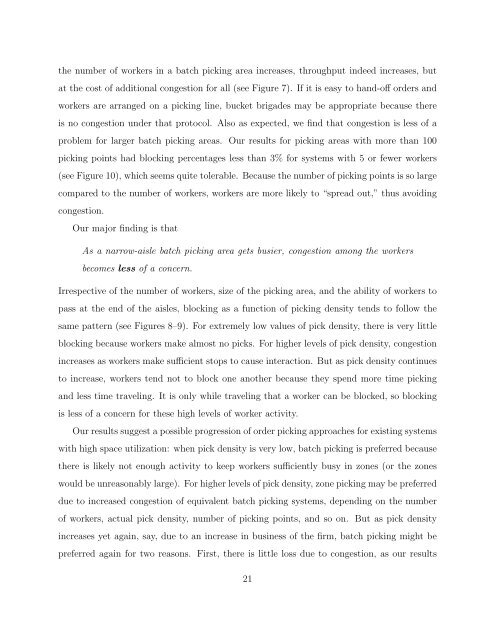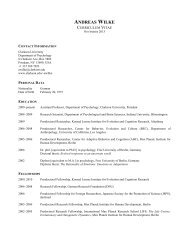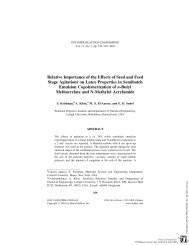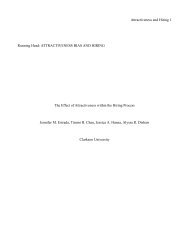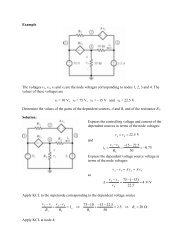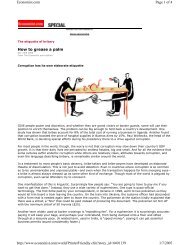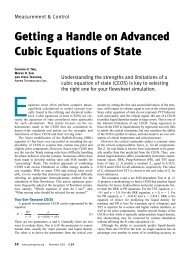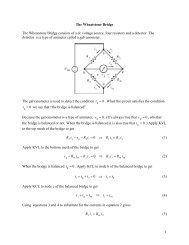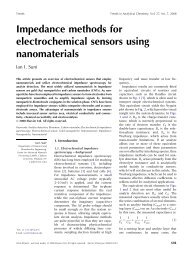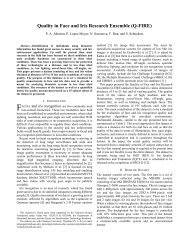The Effects of Pick Density on Order Picking Areas With Narrow Aisles
The Effects of Pick Density on Order Picking Areas With Narrow Aisles
The Effects of Pick Density on Order Picking Areas With Narrow Aisles
Create successful ePaper yourself
Turn your PDF publications into a flip-book with our unique Google optimized e-Paper software.
the number <str<strong>on</strong>g>of</str<strong>on</strong>g> workers in a batch picking area increases, throughput indeed increases, but<br />
at the cost <str<strong>on</strong>g>of</str<strong>on</strong>g> additi<strong>on</strong>al c<strong>on</strong>gesti<strong>on</strong> for all (see Figure 7). If it is easy to hand-<str<strong>on</strong>g>of</str<strong>on</strong>g>f orders and<br />
workers are arranged <strong>on</strong> a picking line, bucket brigades may be appropriate because there<br />
is no c<strong>on</strong>gesti<strong>on</strong> under that protocol. Also as expected, we find that c<strong>on</strong>gesti<strong>on</strong> is less <str<strong>on</strong>g>of</str<strong>on</strong>g> a<br />
problem for larger batch picking areas. Our results for picking areas with more than 100<br />
picking points had blocking percentages less than 3% for systems with 5 or fewer workers<br />
(see Figure 10), which seems quite tolerable. Because the number <str<strong>on</strong>g>of</str<strong>on</strong>g> picking points is so large<br />
compared to the number <str<strong>on</strong>g>of</str<strong>on</strong>g> workers, workers are more likely to “spread out,” thus avoiding<br />
c<strong>on</strong>gesti<strong>on</strong>.<br />
Our major finding is that<br />
As a narrow-aisle batch picking area gets busier, c<strong>on</strong>gesti<strong>on</strong> am<strong>on</strong>g the workers<br />
becomes less <str<strong>on</strong>g>of</str<strong>on</strong>g> a c<strong>on</strong>cern.<br />
Irrespective <str<strong>on</strong>g>of</str<strong>on</strong>g> the number <str<strong>on</strong>g>of</str<strong>on</strong>g> workers, size <str<strong>on</strong>g>of</str<strong>on</strong>g> the picking area, and the ability <str<strong>on</strong>g>of</str<strong>on</strong>g> workers to<br />
pass at the end <str<strong>on</strong>g>of</str<strong>on</strong>g> the aisles, blocking as a functi<strong>on</strong> <str<strong>on</strong>g>of</str<strong>on</strong>g> picking density tends to follow the<br />
same pattern (see Figures 8–9). For extremely low values <str<strong>on</strong>g>of</str<strong>on</strong>g> pick density, there is very little<br />
blocking because workers make almost no picks. For higher levels <str<strong>on</strong>g>of</str<strong>on</strong>g> pick density, c<strong>on</strong>gesti<strong>on</strong><br />
increases as workers make sufficient stops to cause interacti<strong>on</strong>. But as pick density c<strong>on</strong>tinues<br />
to increase, workers tend not to block <strong>on</strong>e another because they spend more time picking<br />
and less time traveling. It is <strong>on</strong>ly while traveling that a worker can be blocked, so blocking<br />
is less <str<strong>on</strong>g>of</str<strong>on</strong>g> a c<strong>on</strong>cern for these high levels <str<strong>on</strong>g>of</str<strong>on</strong>g> worker activity.<br />
Our results suggest a possible progressi<strong>on</strong> <str<strong>on</strong>g>of</str<strong>on</strong>g> order picking approaches for existing systems<br />
with high space utilizati<strong>on</strong>: when pick density is very low, batch picking is preferred because<br />
there is likely not enough activity to keep workers sufficiently busy in z<strong>on</strong>es (or the z<strong>on</strong>es<br />
would be unreas<strong>on</strong>ably large). For higher levels <str<strong>on</strong>g>of</str<strong>on</strong>g> pick density, z<strong>on</strong>e picking may be preferred<br />
due to increased c<strong>on</strong>gesti<strong>on</strong> <str<strong>on</strong>g>of</str<strong>on</strong>g> equivalent batch picking systems, depending <strong>on</strong> the number<br />
<str<strong>on</strong>g>of</str<strong>on</strong>g> workers, actual pick density, number <str<strong>on</strong>g>of</str<strong>on</strong>g> picking points, and so <strong>on</strong>. But as pick density<br />
increases yet again, say, due to an increase in business <str<strong>on</strong>g>of</str<strong>on</strong>g> the firm, batch picking might be<br />
preferred again for two reas<strong>on</strong>s. First, there is little loss due to c<strong>on</strong>gesti<strong>on</strong>, as our results<br />
21


